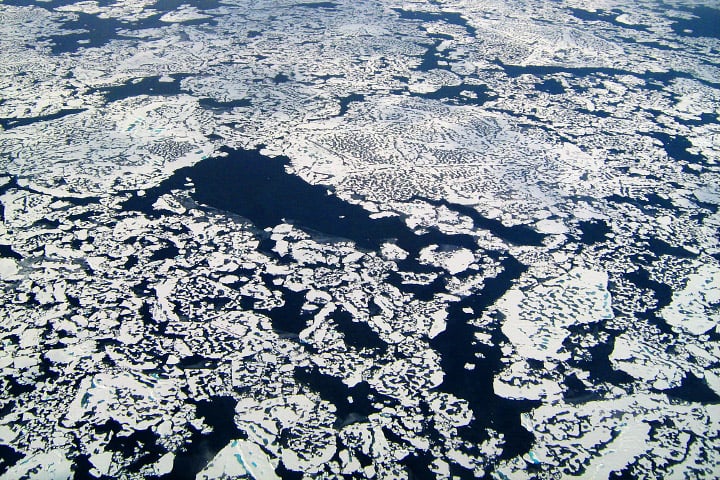As the world struggles to ink a new climate deal to save the planet from the irreversible perils of global warming, countries are rushing to claim their share of the world’s remaining carbon budget.
The world’s “carbon budget”, scientists say, is the total amount of carbon dioxide that we can emit and still keep warming below 2 degrees Celsius. The Intergovernmental Panel on Climate Change (IPCC) puts this figure at an additional 275 gigatonnes of carbon dioxide by 2100.
As negotiations continue, the world is divided between developed nations – who have consumed much of the carbon space already – and developing countries who want burn the remaining budget to develop their economies.
But amid this fight, the world has missed a stark point: the remaining carbon budget maybe much smaller than previously thought. This is because the world is sitting on a time bomb as frozen soil, known as permafrost, begins to melt, releasing potentially vast amounts of additional greenhouse gases into the atmosphere.
Permafrost is the perennially frozen soil that underpins 25% of the Northern Hemisphere and extends across the vast tundra of the Arctic, Siberia and the thinner soil of the Tibetan Plateau. This frozen soil holds vast amounts of organic carbon in the form of plant and animal matter. As the permafrost thaws, bacteria start chewing up the organic matter it contains. This releases yet more carbon dioxide, as well as methane, another greenhouse gas, which has 25 times the warming potential of carbon dioxide.
A new report ‘Thresholds and Closing Windows’ released by the International Cryosphere Climate Initiative on the side lines of the Paris climate summit this week, presents two scenarios showing the impacts of thawing permafrost on greenhouse gas emissions.
“As the permafrost thaws, organic matter will be decomposed by the bacteria and release carbon. So this is a positive feedback and the emissions in turn will lead to further amplification of global warming,” said Susan Natali, from the Woods Hole Research Center who presented the report.
The Polar Regions and Tibetan plateau are already warming two to three times faster than the global average. If the world makes drastic emissions cuts and limits warming to near 1.5 degrees, 30% of permafrost will melt, releasing an additional 50 gigatonnes of carbon by 2100, the report warns.
But given the current emission cuts pledged by countries at Paris, global temperatures are set to rise by 2.7 – 3.5 degrees Celsius. In such a scenario, permafrost melt could release an extra 100 gigatonnes of carbon dioxide.
If average global temperatures rise beyond 4.5 degrees Celsius, 70% of its permafrost will disappear, releasing 130-160 gigatonnes of carbon dioxide straight into the atmosphere – almost two thirds the remaining global carbon budget.
Experts say the only way to stop melting permafrost from warming up the planet is to take drastic low carbon measures.
Irreversible damage
An estimated 1,500 gigatonnes of carbon is stored in permafrost – twice the amount of carbon in the atmosphere. “Permafrost is the largest vulnerable carbon pool on planet and once it thaws, no action can stop it,” said Natali. “Emissions from permafrost need to be accounted for in global carbon emissions.”
The report also highlighted the risks that come with major ice loss: “the very nature of cryosphere – regions of snow and ice – carries dynamics that once started, cannot always be revered or even halted, even if temperatures were somehow returned to lower values.”
The report’s scientific findings prove that changes to the cryosphere will be permanent, including loss of mountain glaciers, loss of portions of West Antarctica’s ice sheets and complete annual loss of summer Arctic sea ice.
Glaciologist Dr Georg Kaser from the University of Innsbruck said projections show that the Himalayas could lose 70% of its glaciers volume by 2100 even if global temperatures rise by only 1.5 degrees Celsius.
Local impacts
Melting permafrost has direct local impacts as well. It changes local ecology and plays havoc with human structures, such as buildings, roads and pipelines, that sit on top of it. Thawing of soil has led to the collapse of houses in Ladakh in India and destabilised the Qinghai-Tibet railway in China.
A recent report from the Chinese Academy of Science warned melting permafrost on the Tibetan plateau was one of the most serious threats to the region’s fragile ecosystem.
